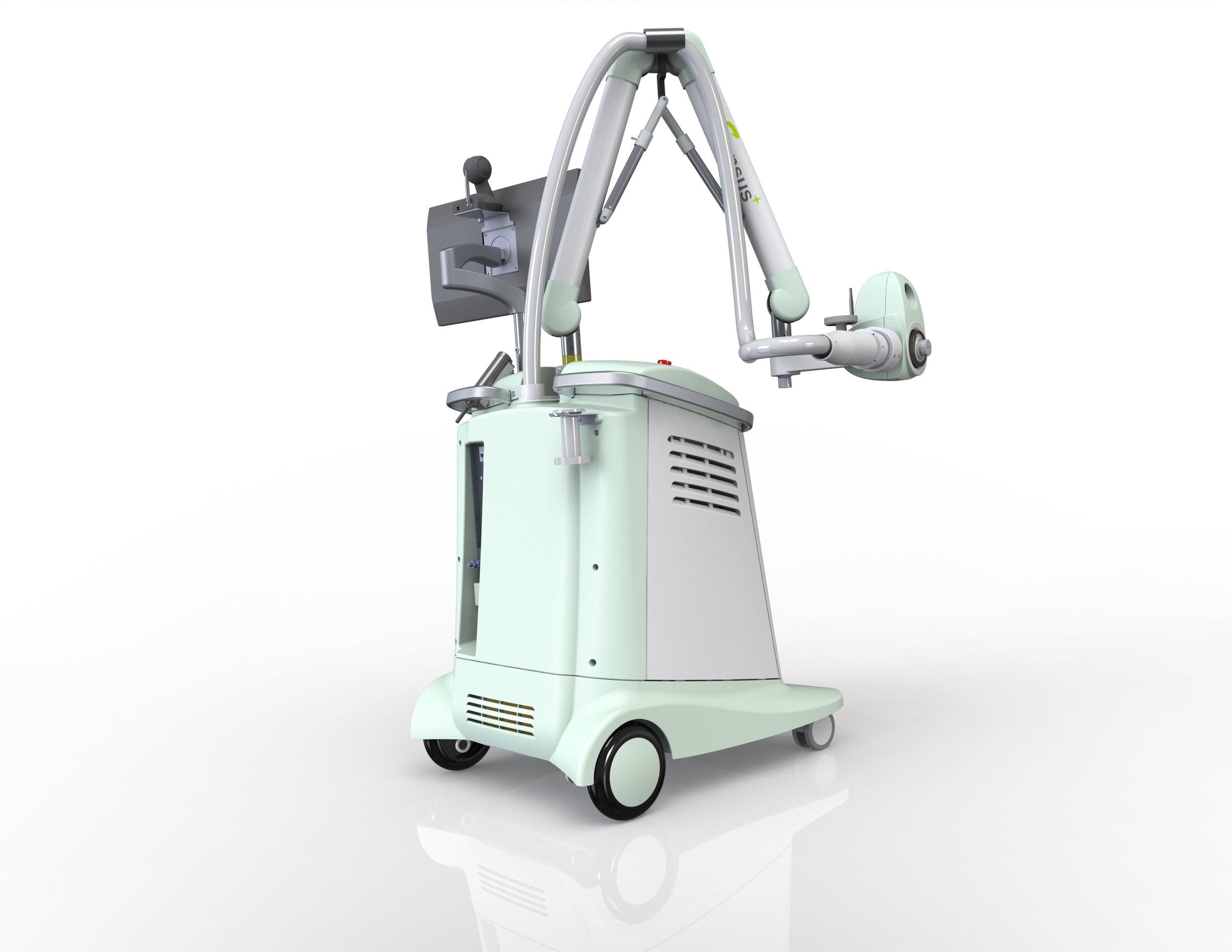
Superficial Radiation Therapy

At Jerdan Dermatology, we make sure the patient is well-informed on their options for skin cancer treatment.
Aside from surgery, Jerdan Dermatology is happy to include Superficial Radiation Therapy (Image Guided) to provide a scarless approach without surgery. With a 99.3% cure rate, this provides patients the option of no surgery, no cutting, and no limits to daily activities.
What is Image-Guided SRT?
Image-Guided SRT (Image-Guided Superficial Radiation Therapy) is a type of radiation used just for skin cancer, targeting skin cancer cells using low levels of X-ray energy. This energy is like what dentists use to X-ray teeth. It is given by a Radiation Therapist in a dermatologist’s office.
Image-Guided SRT is the first and only radiation treatment for skin cancer that uses ultrasound images. The ultrasound images let your dermatologist see the exact size of the cancer so he or she can target the area with the precise dose. These images also show the cancer shrinking and going away after each treatment.
See our before and afters below, and check out the videos below for more information.
Skin Cancer Treatment Without Surgery
50,000th Person Successfully Tested for Common Skin Cancer with GentleCure
Ask Your Doctor About GentleCure

Image-Guided Superficial Radiation Therapy (Image-Guided SRT)
Uses low-energy X-rays, like the X-rays used at a dentist’s office, to deliver doses to skin cancer
Goes only as deep as the skin
Uses ultrasound images to measure the size and depth of the cancer, determine the lowest dose of X-rays needed, and track how the cancer responds to treatment
Is given by Radiation Therapist Tonya Johnson who works together with board certified dermatologist Dr. Jerdan to deliver treatment right in the dermatologist’s office
Does not cause the person to give off radiation after treatment
Has little to no effect on healthy cells around the cancer
Has mild to moderate side effects that go away within weeks of finishing treatment
Answers to Common Questions about Skin Cancer Radiation Treatment with Image-Guided SRT
There can be confusion when it comes to getting radiation treatment for skin cancer. Here are answers to common questions about Image-Guided SRT to address the myths about this type of skin cancer radiation treatment.
-
Getting high doses of radiation for long periods of time can cause harm to your body. However, Image-Guided SRT uses low-energy X-rays, like the X-rays given in your dentist’s office. Ultrasound images taken before treatment help the Radiation Therapist and dermatologist know how big and deep the cancer is and the exact dose needed to kill the skin cancer cells. The radiation goes only as deep as your skin and does not affect other parts of your body.
When choosing the right skin cancer treatment for you, talk with your dermatologist and Radiation Therapist about any concerns you may have.
-
Yes. Image-Guided SRT gives low-energy X-rays, like what is used for X-rays at the dentist’s office. It is not high doses of radiation given for other types of cancer, which needs to be given in a hospital or special radiation center. Your treatments will be given by a Radiation Therapist who works closely with your dermatologist to make sure your cancer is cured. Learn more about the types of skin cancer radiation treatments to help you choose the one that’s right for you.
-
Doctors learn about the safety of a treatment and how well it works by studying it in clinical trials. Treatment with Image-Guided SRT was studied by Dr. Yu and his team. They looked at the results of over 1632 people who had at least one skin cancer treated with Image-Guided SRT. These men and women ranged in age from 31 to 101 years old. They all had early stage (stage 0 to 2) basal or squamous cell skin cancer. Image-Guided SRT was shown to cure 99.3% of skin cancers.
Ask your dermatologist about your type of skin cancer and about all of the treatment options that are right for you.
-
No. Image-Guided SRT can be used to treat skin cancer in adults of any age. Choosing the right skin cancer treatment for you is based on the type of skin cancer you have and your health history, not your age. Be sure to learn about your skin cancer and ask your dermatologist to explain all of your radiation treatment options.
-
Mohs surgery is a common treatment for skin cancer. It is unlikely that the skin cancer would return after Mohs. If it does, or if you have a new skin cancer in the same area, you can get treatment with Image-Guided SRT.
Having Image-Guided SRT instead of Mohs would spare you the cutting, bleeding, wound care, and surgical scarring that often come with Mohs. If your cancer returns or you have a new cancer, be sure to talk with your dermatologist about the differences between Image-Guided SRT and Mohs surgery.
-
Image-Guided SRT cures over 99% of basal and squamous cell skin cancers; it is very rare for a skin cancer to return. However, it is very common for people who have one skin cancer to get another skin cancer. In fact, 40% to 50% of people who have one skin cancer will be diagnosed with another skin cancer within 5 years.
Image-Guided SRT can be used to treat more than one skin cancer at a time. It is very unlikely that a skin cancer would come back in the same spot where you had Image-Guided SRT, but you may get another skin cancer in the same spot. This can happen because of sun exposure or any of the other factors that cause skin cancer. If you get another skin cancer in the same area, talk with your dermatologist about all of your treatment options.
Some people may be concerned if they have a skin cancer in an area where they had radiation for another type of cancer. If that happens, talk with your dermatologist about all of your treatment options so that you can choose the right treatment for you.
-
For 99% of the skin cancers treated with Image-Guided SRT, side effects are mild to moderate and do not limit a person’s activity during or after treatment. Mild side effects may include irritation, redness, or thinning of the skin. Moderate side effects may include skin breakdown, which may increase the risk for a skin infection. These side effects usually go away 2 to 6 weeks after treatment. Talk with your dermatologist about the possible side effects of Image-Guided SRT and get answers to any questions you may have.
Side effects of external and internal radiation used to treat other types of skin cancer can be severe for some people. Side effects depend on the type of radiation given, the dose, the type of cancer and area being treated, and the person’s health history.
-
No. Some types of radiation used to treat other types of cancer, though, can cause the person to be radioactive after treatment. That means the person will give off radiation for a while after treatment and may need to limit activities or contact with others.
That is not a concern for people who get Image-Guided SRT. Image-Guided SRT uses low-energy X-rays to deliver doses of radiation to the surface of the skin. The radiation stays in the skin and continues to kill the cancer cells between visits, but the person is not radioactive. It is the same level of X-rays used to X-ray teeth at a dentist office. A Radiation Therapist can show you the Image-Guided SRT machine before you start treatment and answer any questions you may have.
-
Yes, but not the radiation used for skin cancer treatment.
Ultraviolet (UV) radiation from the sun’s rays and tanning beds is the leading cause of skin cancer. The best way to prevent skin cancer is to use a broad-spectrum sunscreen with a skin protection factor (SPF) of 15 or higher and to avoid the use of tanning beds and sun lamps.
It is important to remember that up to half of all people who have had one skin cancer will have another within 5 years. Sometimes, that new skin cancer is mistaken for the old skin cancer coming back. Some people think that the radiation treatment caused a new skin cancer, when it is likely from the sun’s damaging rays. Getting full-body skin checks and having open, honest conversations with your dermatologist are important for those at risk for skin cancer.



